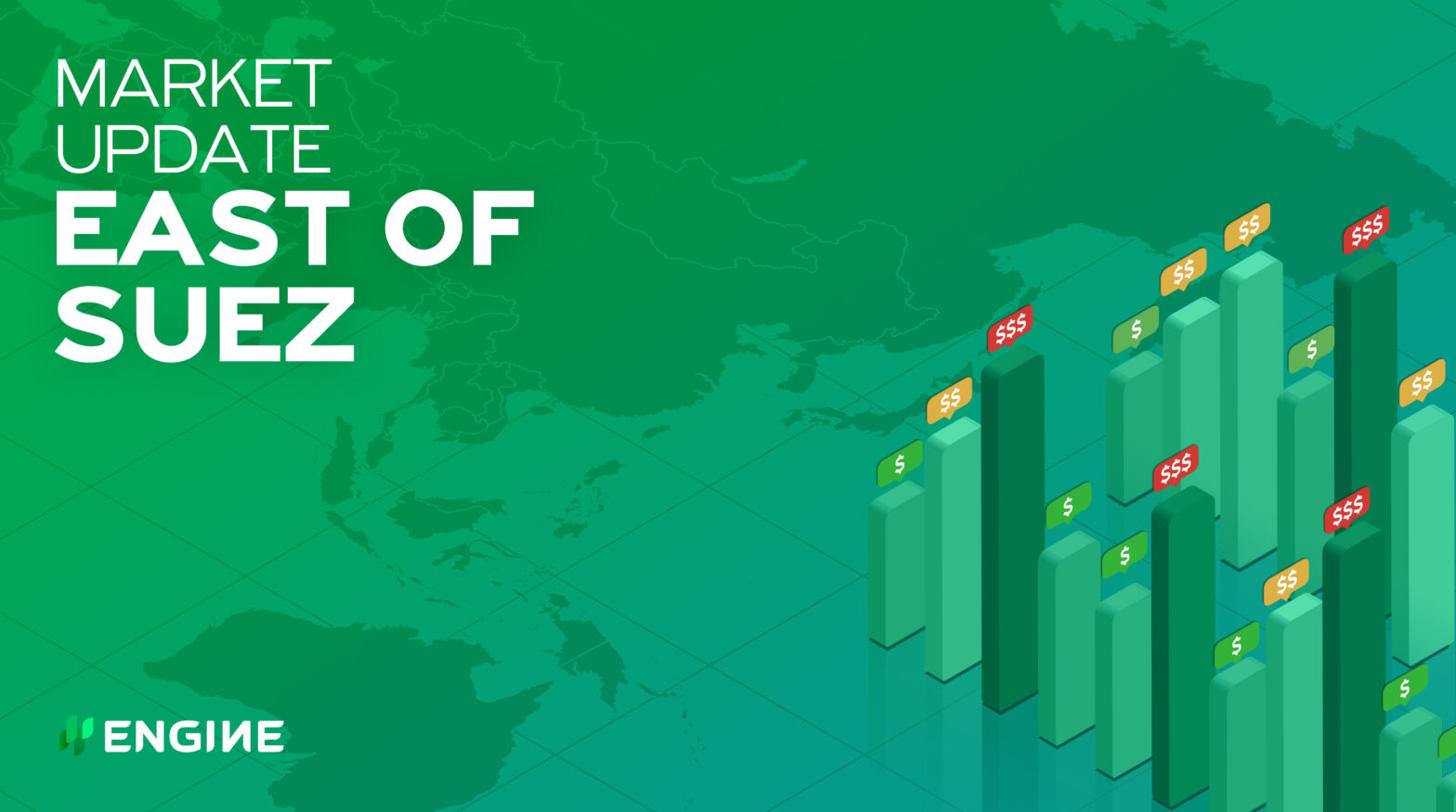East of Suez bunker prices have come off multi-month highs in the past day, tracking declining crude futures.
Changes on the day to 16.00 SGT (08.00 GMT) today:
- VLSFO prices down in Singapore and Zhoushan ($18/mt) and Fujairah ($10/mt)
- LSMGO prices down in Singapore ($15/mt), Zhoushan ($14/mt) and Fujairah ($12/mt)
- HSFO380 prices down in Zhoushan ($20/mt), Singapore ($16/mt) and Fujairah ($12/mt)
Singapore’s VLSFO price is currently the most attractive among the three ports. The bunkering hub has sustained its $20/mt discount to Zhoushan’s VLSFO, and it has flipped to a $7/mt discount to Fujairah.
The Hi5 spread has inched down to $64/mt on the day in Singapore, which is the port’s lowest spread in several months. At the same time, Fujairah’s price difference between the two fuel grades has inched $2/mt wider on the day, to stand at $79/mt.
HSFO380 is tight across all three East of Suez ports, with Fujairah having the longest lead times, at 12 days ahead. Singapore requires a shorter 10 days of lead time, and Zhoushan only 4-5 days in advance.
Fujairah’s fuel oil stocks surged 22% higher in the week to 4 October, when they measured 8.17 million bbls, data from the Fujairah Oil Industry Zone (FOIZ) and S&P Global Platts showed yesterday.
Brent
Front-month ICE Brent has shed $2.40/bbl on the day, coming down from yesterday’s three-year highs to $80.16/bbl at 16.00 SGT (08.00 GMT) today.
A four-day Brent rally on the back of OPEC+ supply restraint this week came to an end yesterday amid a bigger-than-expected commercial crude inventory build in the US in the week to 1 October.
Crude stocks grew by 2.35 million bbls to 420.89 million bbls. US inventories have added weight for two weeks to firmly halt a massive stock draw that was accelerated by production outages in the Gulf of Mexico in the aftermath of Hurricane Ida.
“This was more than the roughly 1MMbbls increase the market was expecting and also larger than the 951Mbbls reported by the API the previous day,” ING strategists Warren Patterson and Wenyu Yao said.
Higher net imports propped up the crude stocks, even as refinery input of crude and utilisation rates ticked up. US Gulf Coast refineries have almost regained pre-hurricane production levels.
Gasoline stocks grew considerably, too, which could be viewed as a sign of waning demand.
“Gasoline demand dropped for a fourth straight week, which was somewhat expected given the end of summer travel and as many individuals continue to work-from-home,” OANDA market analyst Ed Moya said.
Brent has also come under pressure from Saudi Arabia’s decision to cut crude oil selling prices to Asia for November.
